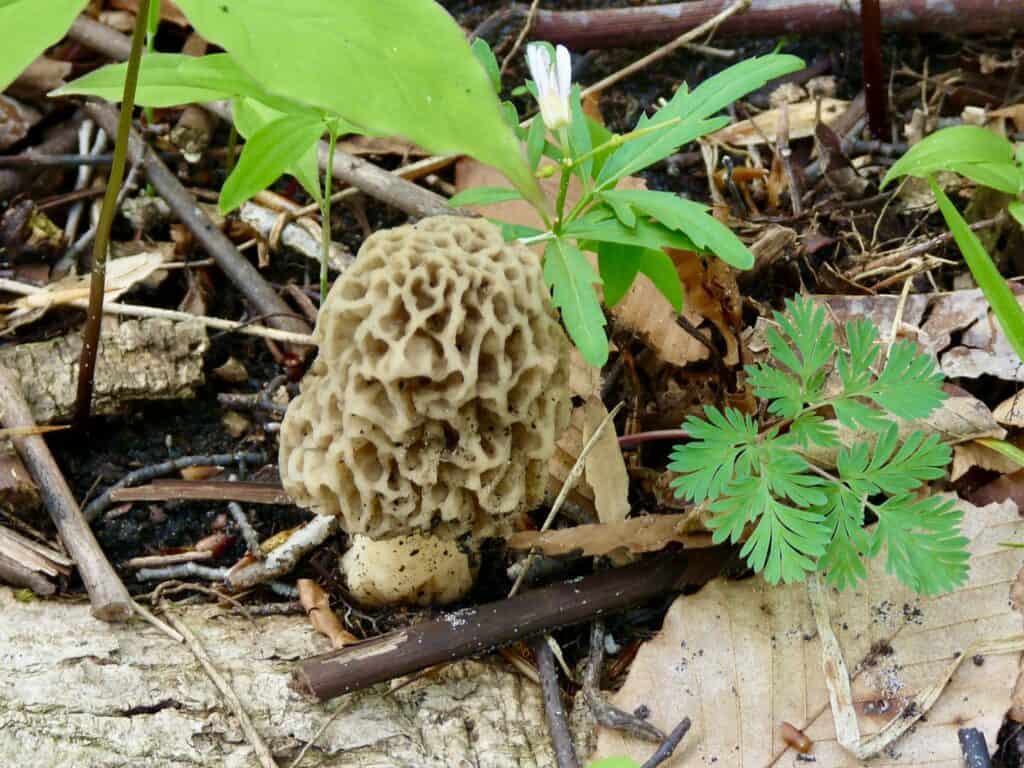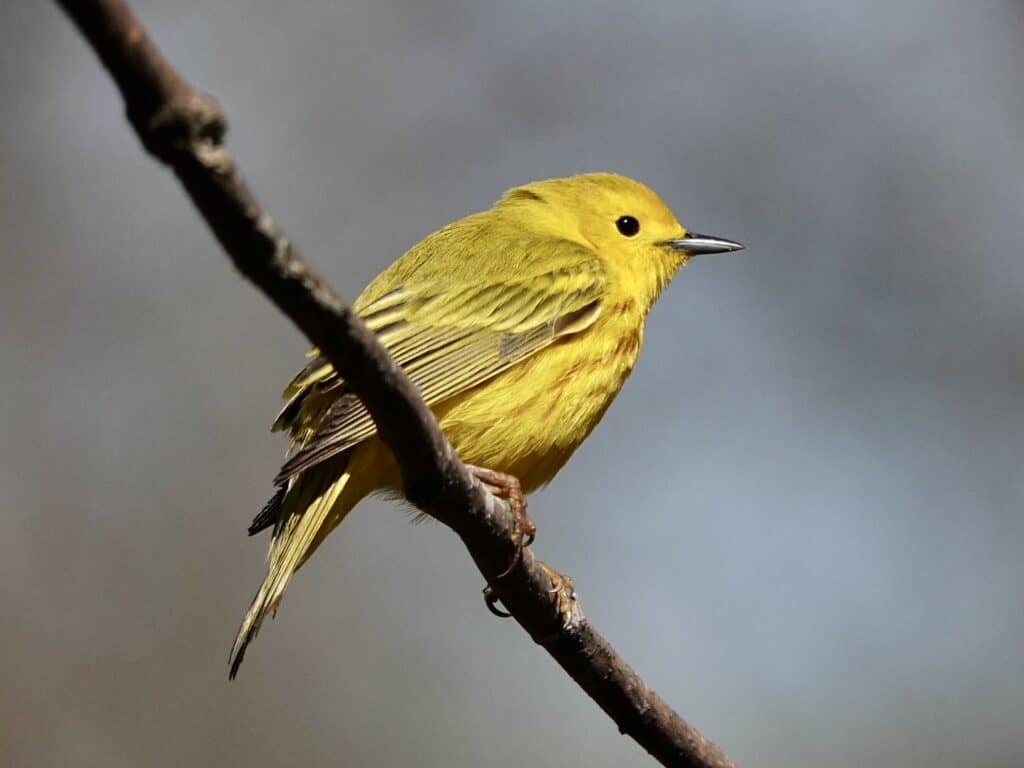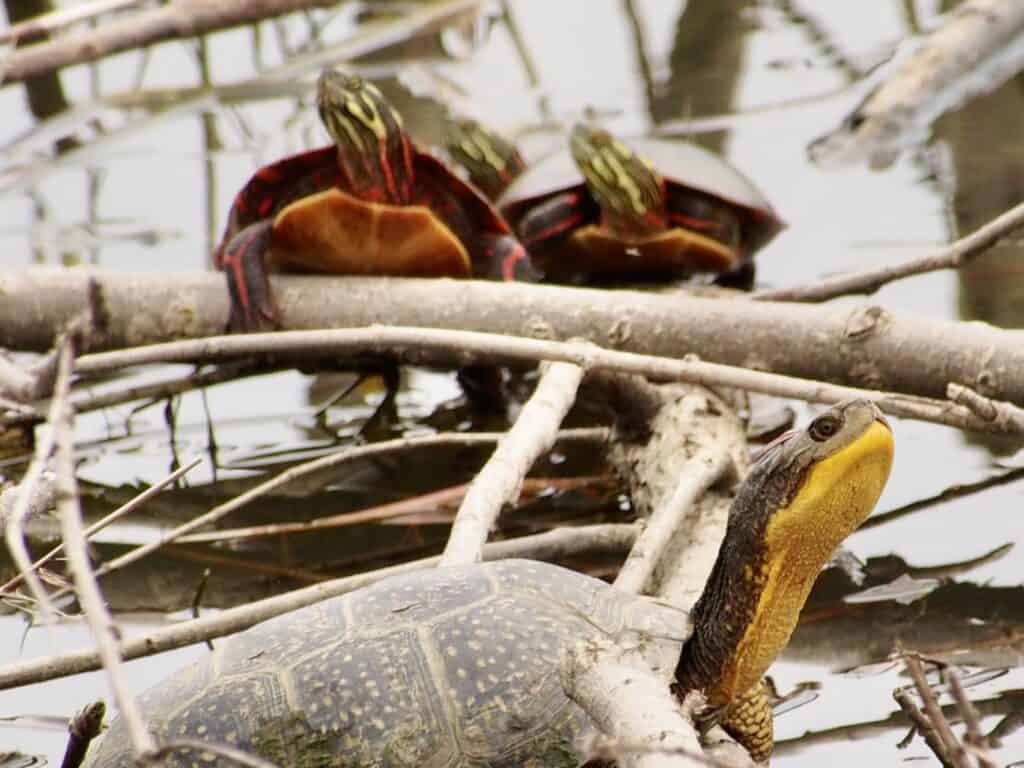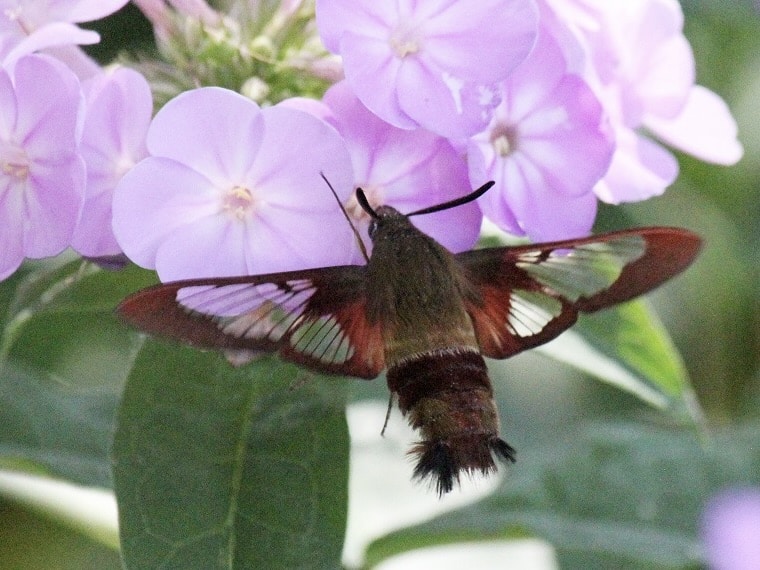Keep your eyes and ears peeled
Peterborough Examiner – May 20, 2022 – by Drew Monkman
As we begin to transition from spring into summer, I’d like to provide a taste of some of the wonderful events in nature to look forward to in the coming weeks and months.
Top of mind for some of us, however, is whether spongy moths (formerly gypsy moths) will be back in the same devastating numbers again this year. Healthy deciduous trees can withstand a few years of defoliation but become more susceptible to drought and disease. Evergreens like pines and spruce can die after just one year of losing their needles.
Last spring, the Kawarthas had one of the largest areas of moderate to severe defoliation in southern Ontario, according to data from the Ministry of Northern Development, Mines, Natural Resources and Forestry. The infestation is now entering its fourth season. Although survey data indicates that the outbreak is beginning to decline, severe defoliation in many areas is still expected this year.
Late May
- With many species nesting, keep your cat indoors. Huge numbers of baby birds fall prey to free-roaming cats every year.
- The damp morning air is rich with the fragrance of balsam poplar resin, a characteristic smell of spring in the Kawarthas. The smell of lilacs, too, is synonymous with May.
- Morel mushrooms are in fruit through early June. The cap is shaped somewhat like a pinecone with a series of pits and ridges. Morels are edible but be sure of the identification.
- Sounding remarkably like birds, gray treefrogs serenade us with their slow, musical trills. This species often calls during the day.
- Wild columbine blooms late this month along roads and trails. The flowers, a beautiful blend of red and yellow, hang in a bell-like fashion.
- Tiger swallowtail butterflies usually appear at the end of May. They are sometimes seen imbibing minerals at puddles along dirt roads and trails.
- To attract more birds to your yard, consider planting trees that host the largest variety of caterpillars. Most are tiny and don’t harm the tree. Nearly all birds require caterpillars to feed their young. The best species are native oaks, willows, and cherries.

June
- Birdsong is at its loudest and most diverse, especially at dawn.
- The yellow dust covering everything from cars and decks to puddles and shorelines is pollen from the male flowers of conifers such as pine.
- A signature scent of the June air comes courtesy of the wonderfully aromatic white blossoms of the black locust.
- Painted turtles and snapping turtles are often seen along roadsides and other sandy locations where they lay their eggs. If you see a turtle on the road – and if safe to do so – help it get across. If you find an injured turtle, call the Ontario Turtle Conservation Centre immediately at 705-741-5000.
- The first monarch butterflies usually appear in the Kawarthas early June. According to Chip Taylor on the Monarch Watch Blog, early observations of north-bound monarchs in Texas is not encouraging. Once again, the overwintering population in Mexico was low this year.
- Orchids are in bloom. Among them are yellow, pink and showy lady’s slippers.
- Yellow warblers and American redstarts are common along rail-trails. A great spot to see them is the Rotary-Greenway Trail at Thomas A. Stewart Secondary School.
- Giant silk moths are emerging from their cocoons and then flying off to look for mates. The most commonly seen species in our area is the Cecropia.
- The Summer Solstice occurs on June 21. The sun will rise and set farther north than on any other day of the year.
- Butterfly-watching is usually at its most productive in early summer since the greatest number of species is flying at this time. White admirals are particularly noticeable.

July
- Being opposite the high-riding sun, the summer moon is always low in the sky. This makes for the longest moon shadows of the year.
- Common milkweed is in flower and its rich, honey-sweet perfume fills the early summer air.
- Some of the best “botanizing” this month is in wetland habitats. Watch for the blooms of common elderberry, swamp milkweed, Joe-Pye weed, yellow pond lily, fragrant white water lily, bladderworts, and sundews. In bogs on the Canadian Shield, gorgeous orchids like rose pogonia and grass-pink bloom in early July.
- One of the most common summer bird songs is that of the red-eyed vireo.It sings non-stop, robin-like phrases from high in the canopy.
- There’s a good chance that what looks like a tiny hummingbird in your garden is actually a clearwing hummingbird moth. They feed on the nectar of flowers such as phlox, hovering with the red-brown body stationary.
- To enjoy the wonderful diversity of ferns we have in the Kawarthas, I recommend exploring the Warsaw Caves Conservation Area and both Mark S. Burnham and Silent Lake Provincial Parks.
- By month’s end, watch for mushrooms such as white pine boletes and fly agarics.

August
- Check milkweeds for the eggs and caterpillars of the monarch butterfly. Monarchs are easy to rear in captivity and provide adults and children alike with a first-hand lesson in insect metamorphosis.
- Cottagers sometimes find large, mysterious jelly-like “blobs” attached to docks or aquatic plants. Looking somewhat like an egg mass, they are formed by colonies of Bryozoa, a freshwater invertebrate.
- Watch for small dragonflies known as meadowhawks. Mature males are red, while females and immature males are yellowish.
- Most insect music this month comes courtesy of cicadas, crickets, and katydids. For example, the soft, rhythmic “treet…treet…treet” of the snowy tree cricket sounds like a gentle-voiced spring peeper. Watch and listen at bit.ly/18nGrJ3
- August 12 is the peak of the annual Perseid meteor shower, but viewing can also be good a day before or after.
- Bird migration is in full swing by mid- to late August, with numerous southbound warblers, vireos, and flycatchers moving through our area. The trail along the west side of the canal south of Nassau Mills Road is a great early-morning location to see them.
- Goldenrods reach peak bloom at month’s end and become the dominate flowers of roadsides and fields. These plants are veritable insect magnets.

CLIMATE CHAOS UPDATE
Hope: According to Kingsmill Bond, an international energy analysist, Russia’s invasion of Ukraine means that global demand for fossil fuels has very likely peaked — for good. Putin’s war has brought instability, violence, and human tragedy on a massive scale with effects rippling across the world. The crisis has led to a huge increase in the cost of fossil fuels. High prices drive a reaction. “The twin forces of national security and energy economics are driving permanent system change away from fossil fuels quicker than ever,” according to Bond. Fossil fuel importing countries everywhere (80 percent of the world’s population) fear that, like Europe, they too could one day fall out with their fossil fuel supplier. See https://tinyurl.com/2p8xvc3p
Carbon dioxide: The atmospheric CO2 reading for the week ending May 14 was 421.13 parts per million (ppm), compared to 418.34 ppm a year ago. The highest level deemed safe for the planet is 350 ppm. Rising CO2 means more climate chaos ahead.
Take action: People often say there’s nothing they can do as individuals about climate change. Well, there is. How you vote on June 2 is vitally important. For a detailed look at party platforms, go to https://forourgrandchildren.ca/ and click on Ontario Provincial Election Actions. You’ll also find other personal actions you can take to help elect a local candidate whose party puts environmental protection front and centre. Hint: It’s not the Conservatives.